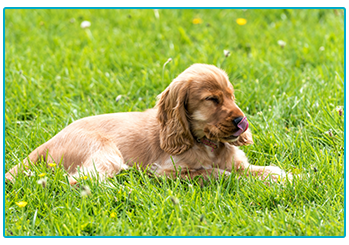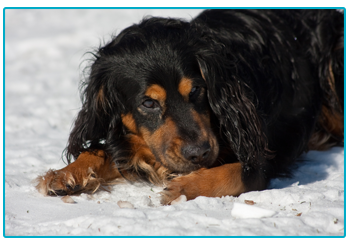Being a dog owner can produce some magical adventures. You might start going on more walks, holidays to different places or eating at certain dog-friendly pubs. It certainly won’t be dull and you’ll get yourself a new member of the family who you’ll absolutely adore. But dogs are complex creatures and can suffer from a number of afflictions and illnesses, just like us. Some breeds are more prone to certain issues than others and that is certainly the case with grass seed infections. The condition is generally caused either by the seed getting caught up in the dog’s fur, or puncturing the skin. It then proceeds to become irritating, painful and potentially infected. Grass seed infections are very common problems for some dogs, so here’s everything you need to know about them and some ideas for prevention.
The tell-tail signs
There are a number of ways of telling a dog is being affected by a grass seed infection. Generally, how the dog is impacted depends on where on the body the seed has started to burrow. In most cases, your dog will scratch, lick and bite the affected area in an attempt to remove the seed. At that stage, the seed has generally already pierced the skin, so the dog’s efforts are usually in vain and a trip to the vet is most likely the next stage.

Which body parts are most susceptible?
Many parts of the dog anatomy can be at risk of grass seed infection, including the mouth, nose, eyes and stomach. But their feet, legs and ears are the most commonly affected. Generally, the seed gets caught in your dog’s fur and, if unchecked, it can reach the skin and pierce it, causing the irritation and potential infection. Many of the other at-risk areas become infected because the seed has been able to nestle close to the skin, like the corner of the mouth or eye.

Which dogs are most at risk?
Such is the nature of grass seed infection, it’s more of a problem for dogs with longer fur. It’s a particularly common issue among breeds of Spaniel, with their thicker hair, especially around their paws, making grass seeds more likely to attach and difficult to spot without a thorough going-over. West Highland White Terriers and Jack Russells are also no strangers to the problem, but it’s worth remembering that most dogs can suffer from grass seed infections.
Treatment
If you suspect that your dog is acting a little different to usual or exhibiting any of the aforementioned symptoms, a trip to the vet is likely in order. Sometimes the seed can be removed with scissor-like implements called crocodile forceps, but what makes it difficult to treat is that the seed is made up of vegetable matter, meaning it won’t show up on an X-ray. If the infection is advanced, general anaesthetic or even surgery can be required.

Prevention
It’s unlikely that you’ll ever find a 100% effective way of preventing such infections, but there are certainly some efficient techniques. Keeping your dog’s fur trimmed and well-maintained, particularly around their paws and ears, is said to be best pre-emptive action. You could get your dog some booties for when they’re outside and give their coats a thorough check upon returning from a walk.
Summer is well and truly upon us, so you’ll undoubtedly want to be out and about that bit more with your pup. However, it’s worth bearing in mind that grass seed infections are most common during the summer and autumn months when you are more likely to be making the most of the nicer weather. At least with The Insurance Emporium’s Lifetime policy type you could get up to £8,000 of Vet’s Fees cover to potentially prevent you from being out of pocket should your dog suffer from such a problem. If that sounds helpful to you, visit The Insurance Emporium today to find out more or get a quote!
All content provided on this blog is for informational purposes only. We make no representations as to the accuracy or completeness of any information on this site or found by following any link on this site. We will not be liable for any errors or omissions in this information nor for the availability of this information. We will not be liable for any loss, injury or damage arising from the display or use of this information. This policy is subject to change at any time.


